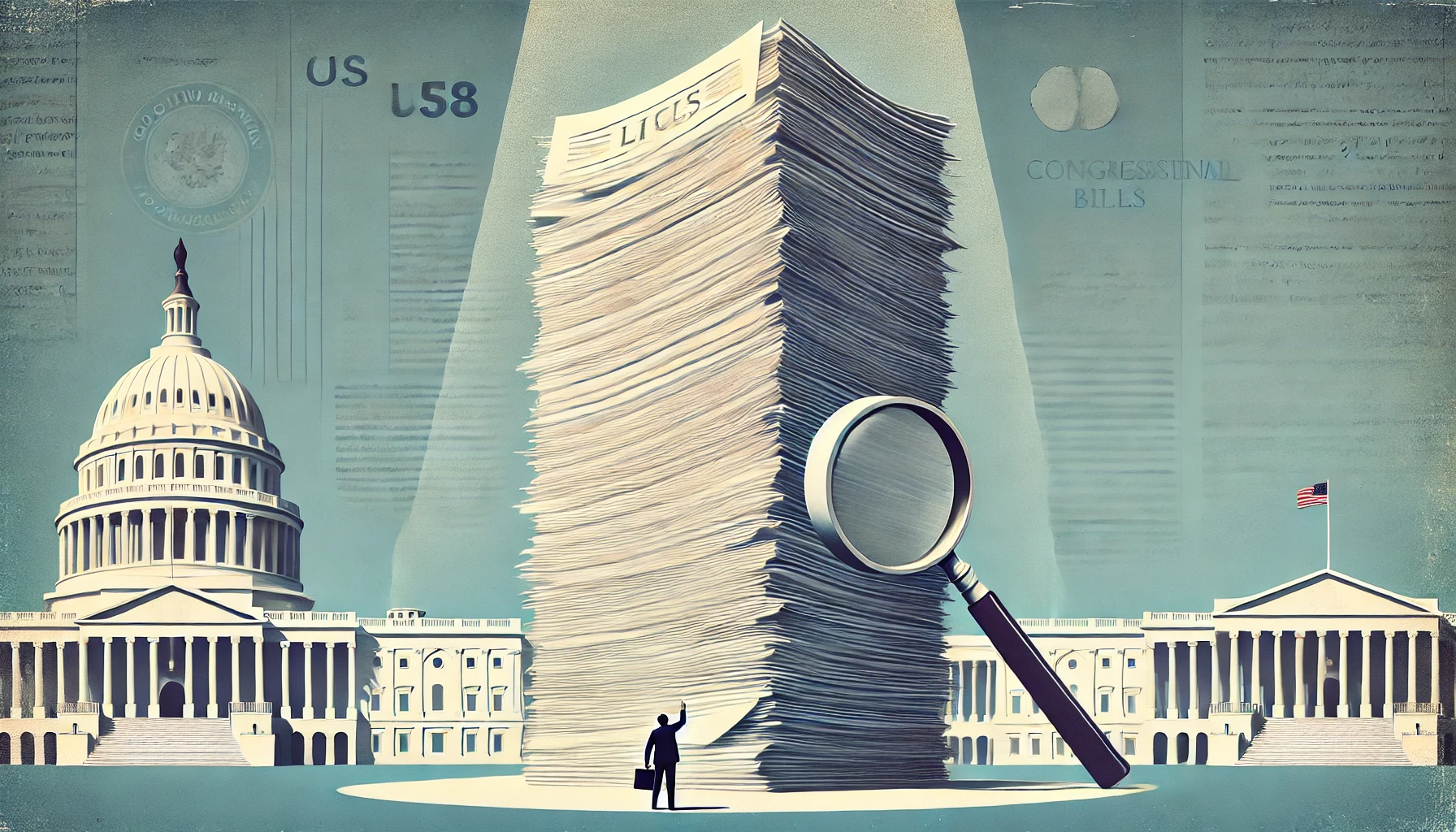Introduction
The American legislative process has undergone a troubling transformation over the past century. What began as a system producing focused, comprehensible laws has evolved into one that regularly generates massive, incomprehensible omnibus bills thousands of pages long. This shift threatens the very foundations of democratic governance by making it impossible for legislators, let alone the public, to understand what they’re voting on or what has become law.
This article proposes a return to smaller, focused legislation with a specific size limit of 50 pages per bill. This limit would restore transparency, accountability, and deliberative democracy to the legislative process.
Historical Context
The Early American Tradition
The first Congress of the United States passed laws that were remarkably brief and focused. The entire Bill of Rights fits on a single page. The Northwest Ordinance of 1787, which established the governance structure for an enormous territory and set fundamental principles of American expansion, was just over 2,000 words.
The Growth of Legislation
By contrast, modern legislation has grown to staggering proportions:
- The Affordable Care Act: 2,700 pages
- The Infrastructure Investment and Jobs Act: 2,700 pages
- Dodd-Frank Wall Street Reform: 2,300 pages
- The Tax Reform Act of 1986: 1,300 pages
This growth isn’t merely a reflection of more complex times—it represents a fundamental breakdown in legislative practice.
The Problems with Massive Bills
1. No One Can Read Them
The physical impossibility of reading and understanding these bills before voting has become a running joke in Congress. When bills are released mere hours before votes, even speed-reading the text would be impossible, let alone understanding its implications.
2. Hidden Provisions
Massive bills provide cover for special interest provisions that would never survive scrutiny on their own. A controversial measure buried on page 1,842 of a “must-pass” spending bill effectively bypasses democratic scrutiny.
3. Legislative Hostage-Taking
Giant bills enable political manipulation by tying popular provisions to controversial ones. Legislators are forced to accept measures they oppose to pass those they support, a practice that corrupts democratic decision-making.
4. Implementation Chaos
When bills are too large to understand, implementation becomes a nightmare. Agencies must interpret thousands of pages of requirements, often with contradictory provisions or unclear intentions.
5. Unintended Consequences
The complexity of massive bills makes it impossible to predict their full impact. Interactions between different provisions often create unintended consequences that could have been caught with more focused legislation.
The Case for a 50-Page Limit
Why 50 Pages?
A 50-page limit would:
- Be long enough for complex legislation
- Short enough to be read and understood
- Allow proper debate and analysis
- Force clear, focused writing
- Prevent unrelated additions
Benefits of the Limit
1. Readability
- Legislators can actually read bills before voting
- Staff can provide thorough analysis
- Public can understand new laws
- Media can report accurately
- Experts can give meaningful testimony
2. Focus
- Each bill addresses one main issue
- Related provisions stay connected
- Unrelated items require separate bills
- Clearer legislative intent
- Better public debate
3. Accountability
- Clear voting records on specific issues
- No hiding behind massive bills
- Easier to track effectiveness
- Simpler to fix problems
- Better constituent understanding
4. Quality
- Forces clear writing
- Eliminates unnecessary complexity
- Reduces duplicative provisions
- Improves legislative crafting
- Better overall laws
Implementation Strategy
1. Constitutional Amendment
While a constitutional amendment limiting bill size would be ideal, it’s not necessary to begin reform.
2. Congressional Rules
Both houses could adopt rules limiting bill size, with exceptions requiring supermajority votes.
3. Gradual Phase-In
- Year 1: 500-page limit
- Year 2: 200-page limit
- Year 3: 100-page limit
- Year 4: 50-page limit
4. Committee Reform
- Separate committees for related issues
- Regular review of existing laws
- Streamlining older legislation
- Breaking up existing massive laws
Addressing Common Objections
“Modern Issues Are Too Complex”
Complex issues can be broken into logical components. The Interstate Highway System, perhaps the most complex government project of its time, was created through multiple focused bills.
“It Would Take Too Long”
- Multiple bills can move simultaneously
- Focused bills move faster
- Better laws need fewer fixes
- Quality over speed
“Everything Is Connected”
- Related bills can cross-reference
- Sequential passage possible
- Complex issues can be modular
- Better than false connections
“We Need Omnibus Bills”
- Regular order better than crisis legislation
- Proper process prevents year-end chaos
- Focused bills reduce brinksmanship
- Better fiscal planning
Examples of Breaking Up Large Bills
Infrastructure
Instead of one 2,700-page bill:
- Highway and Bridge Act (50 pages)
- Public Transit Development Act (50 pages)
- Water Infrastructure Act (50 pages)
- Broadband Development Act (50 pages)
- Electric Grid Modernization Act (50 pages)
- State Projects Authorization Act (50 pages)
Healthcare
Instead of the ACA:
- Insurance Market Reform Act
- Medicaid Expansion Act
- Healthcare Exchange Act
- Medical Practice Reform Act
- Healthcare Tax Reform Act
- Multiple focused implementation bills
Conclusion
The trend toward massive, incomprehensible legislation threatens democratic governance. A 50-page limit on bills would restore transparency, accountability, and deliberation to the legislative process. While implementation would require significant changes in congressional practice, the benefits to democratic governance would far outweigh the costs.
Some will argue this proposal is unrealistic in today’s political environment. But the current system of massive, unread bills passed in the dead of night is what’s truly unrealistic for a functioning democracy. The choice isn’t between big bills and no bills—it’s between transparent, focused legislation and the continued deterioration of democratic governance.
The founders wrote the Constitution to fit on a few pages. Today’s Congress routinely passes bills longer than the collected works of Shakespeare. It’s time to return to the principles of focused, comprehensible legislation that characterized the early American republic. A 50-page limit would be a crucial step toward that goal.

